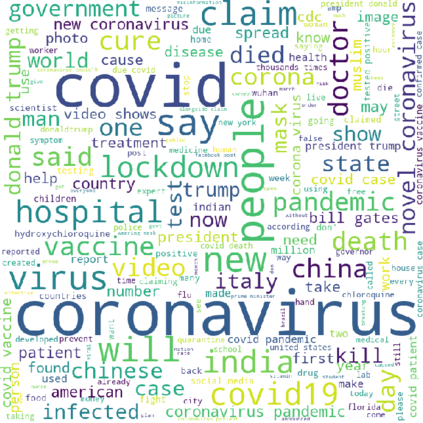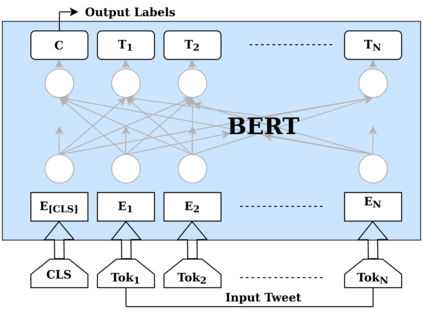Recent rapid technological advancements in online social networks such as Twitter have led to a great incline in spreading false information and fake news. Misinformation is especially prevalent in the ongoing coronavirus disease (COVID-19) pandemic, leading to individuals accepting bogus and potentially deleterious claims and articles. Quick detection of fake news can reduce the spread of panic and confusion among the public. For our analysis in this paper, we report a methodology to analyze the reliability of information shared on social media pertaining to the COVID-19 pandemic. Our best approach is based on an ensemble of three transformer models (BERT, ALBERT, and XLNET) to detecting fake news. This model was trained and evaluated in the context of the ConstraintAI 2021 shared task COVID19 Fake News Detection in English. Our system obtained 0.9855 f1-score on testset and ranked 5th among 160 teams.
翻译:最近推特等在线社交网络的快速技术进步导致大量传播虚假信息和假消息的大幅增长。错误信息在正在流行的冠状病毒(COVID-19)大流行中特别普遍,导致个人接受虚假和潜在的有害主张和文章。快速发现假消息可以减少公众恐慌和混乱的蔓延。我们在本文件中的分析中报告了分析有关COVID-19大流行的社交媒体所共享信息的可靠性的方法。我们的最佳方法基于三种变压器模型(BERT、ALBERT和XLNET)的组合,以探测假消息。这一模型是在ConstraintAI 2021共同任务COVID19 Fake新闻英语探测中培训和评估的。我们的系统在测试中获得了0.9855法郎,在160个团队中排名第5位。









